This semester, we partnered with the Cambridge Arts Council to design an exhibition called "In:Accessible." The working exhibition was created by our students with the support of our NuVu Coaches. The exhibition is located in Gallery 344 at City Hall Annex and showcases our students' work on innovative products for people with disabilities.
In Gallery 344 at City Hall Annex, In:Accessible presents both the process and content of learning at NuVu. The students explore and expand the notion of access in the public and private realm within cities. They raise questions about how a city engenders openness, freedom, and opportunity for the people, animals, and plants who inhabit it. By looking at access through a variety of lenses (social, spatial, physical, physiological, psychological), In:Accessible illuminates potential connections that might allow people to transcend the barriers inhibiting participation.
In:Accessible examines the rights and ownership of civic spaces: how transportation infrastructure (bike lanes, crosswalks, bus stops, T stations) can connect and disconnect residents; how racial and socioeconomic segregation grows in a city; and how gender identity can shape a place.
This past March, our students installed Part I of In:Accessible, presenting distillations, concept prototypes, and work based on their research and design development.
More on In:Accessible: http://www.cambridgema.gov/arts/publicart/gallery344
Schedule of NuVu events:
February 18, 2018, 6:00-8:00pm
End-of-Term, Winter NuVu Exhibit/Demo Day
Location: NuVu Studio, 450 Massachusetts Ave, Cambridge, MA 02139
March 26, 2018, 6:00-8:00pm
In:Accessible Gallery Reception and Conversation with NuVu Students
Conversation about current and future assistive/adaptive technologies
Location: Gallery 344, City Hall Annex, 344 Broadway, 2nd Fl.
April 26, 2018, 5:30pm
Film Screening
NuVu Student Short Documentaries and Feature Film Edward Scissorhands
Location: City Hall Annex, 2nd Floor Community Meeting Room
:rotate(0)/p39f1jed4mgd288myquiu5yecweg)
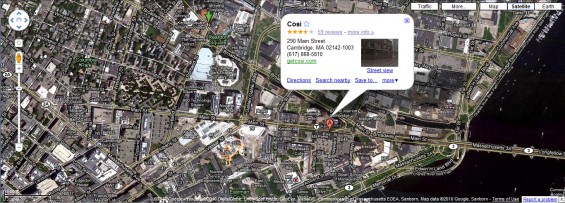
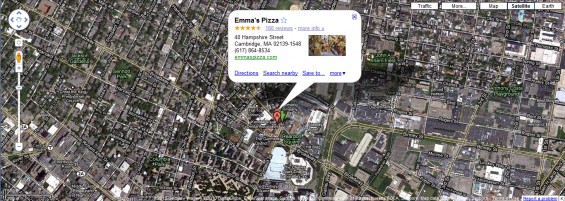
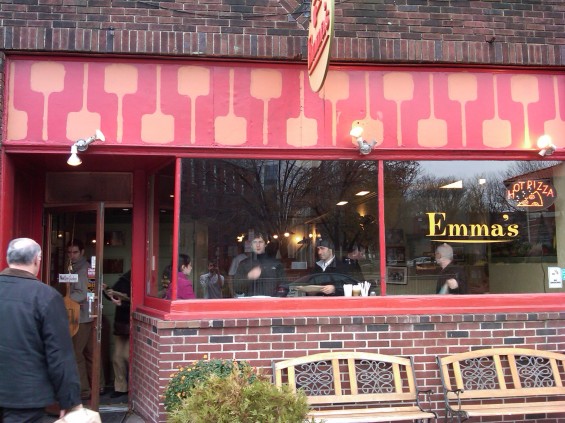

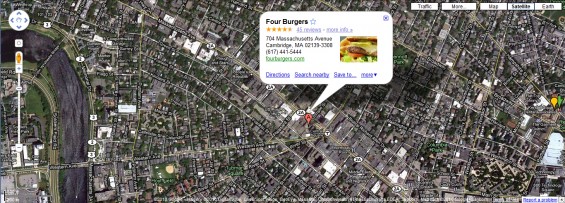
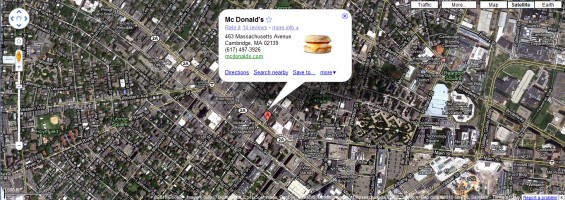
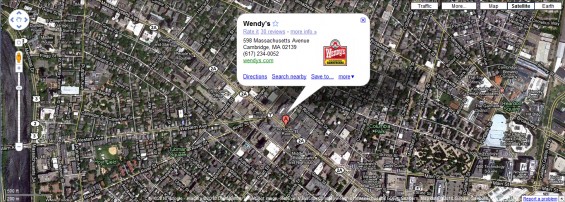
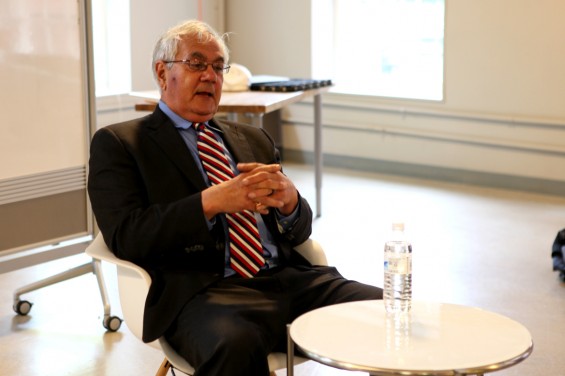

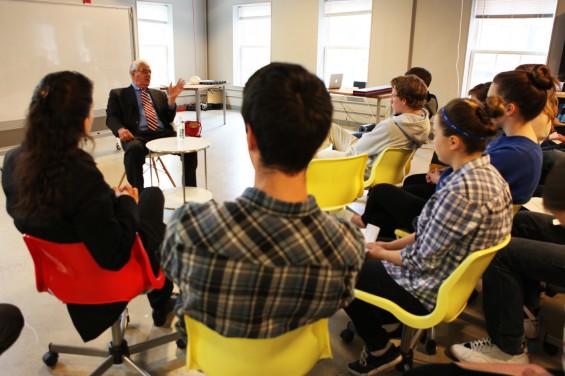
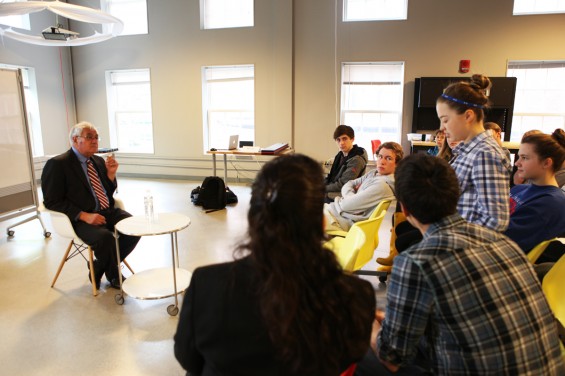
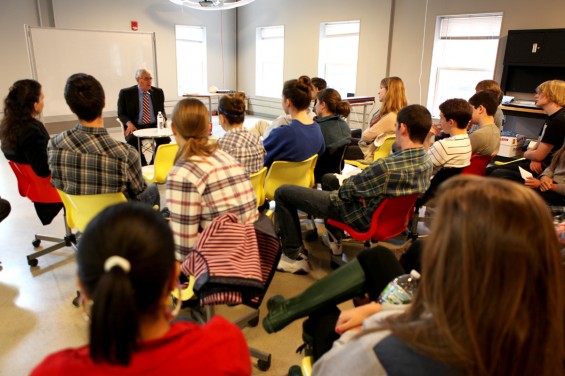
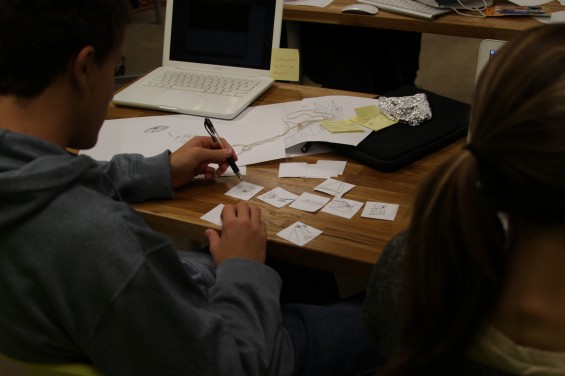
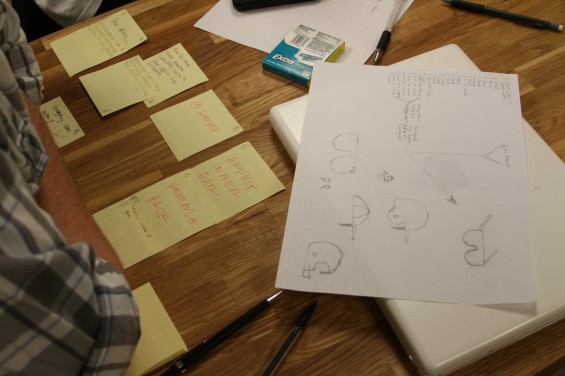
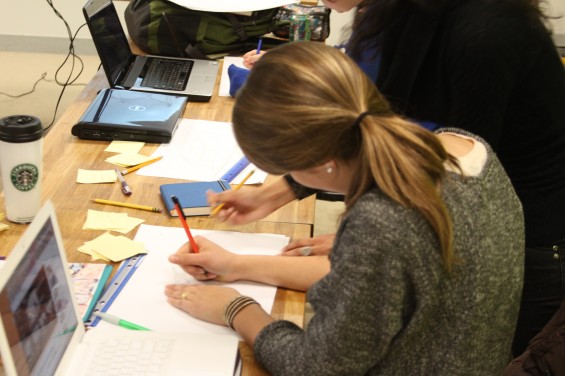
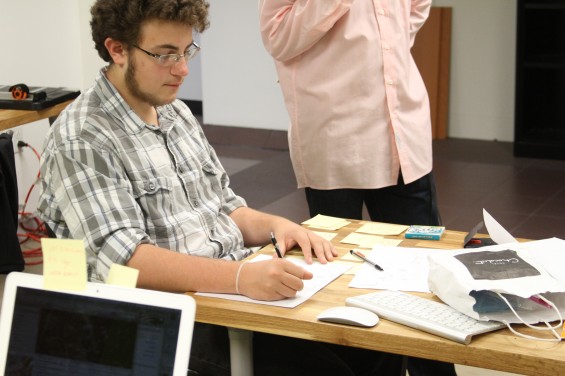
 Using tutorials on Max and a bought webcam, we built a patch that took the image from the camera and did the following effects: 1. Changed the color to black and white; 2. Constructed a segmented patch to enable us to use the microphone on the camera; 3. Made the screen get smaller/larger depending on how loud the participant was being; 4. Placed a fogger in Max so that if the participant was being loud, the image would get foggy; 5. Included a color converter so that, similar to 3 and 4, if participant was being noisy, then everything in the image that was black would turn to white, and everything that was white would turn to black; and 6. Hooked up a control box that allowed our teammate Angelo to experiment with the intensity of each particular effect we had in our project while participants where dancing in front of the camera.
Using tutorials on Max and a bought webcam, we built a patch that took the image from the camera and did the following effects: 1. Changed the color to black and white; 2. Constructed a segmented patch to enable us to use the microphone on the camera; 3. Made the screen get smaller/larger depending on how loud the participant was being; 4. Placed a fogger in Max so that if the participant was being loud, the image would get foggy; 5. Included a color converter so that, similar to 3 and 4, if participant was being noisy, then everything in the image that was black would turn to white, and everything that was white would turn to black; and 6. Hooked up a control box that allowed our teammate Angelo to experiment with the intensity of each particular effect we had in our project while participants where dancing in front of the camera. 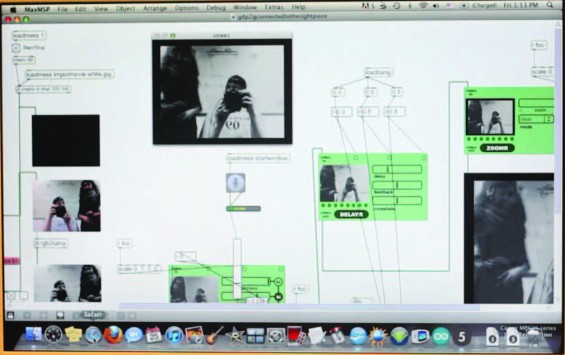 Here's an image of Saeed and Saba dancing for our interactive art piece (the name of the project, "The Saeed Shimmy," was inspired by Saeed's famous dance move!):
Here's an image of Saeed and Saba dancing for our interactive art piece (the name of the project, "The Saeed Shimmy," was inspired by Saeed's famous dance move!):  post by Stephen Phillips
post by Stephen Phillips